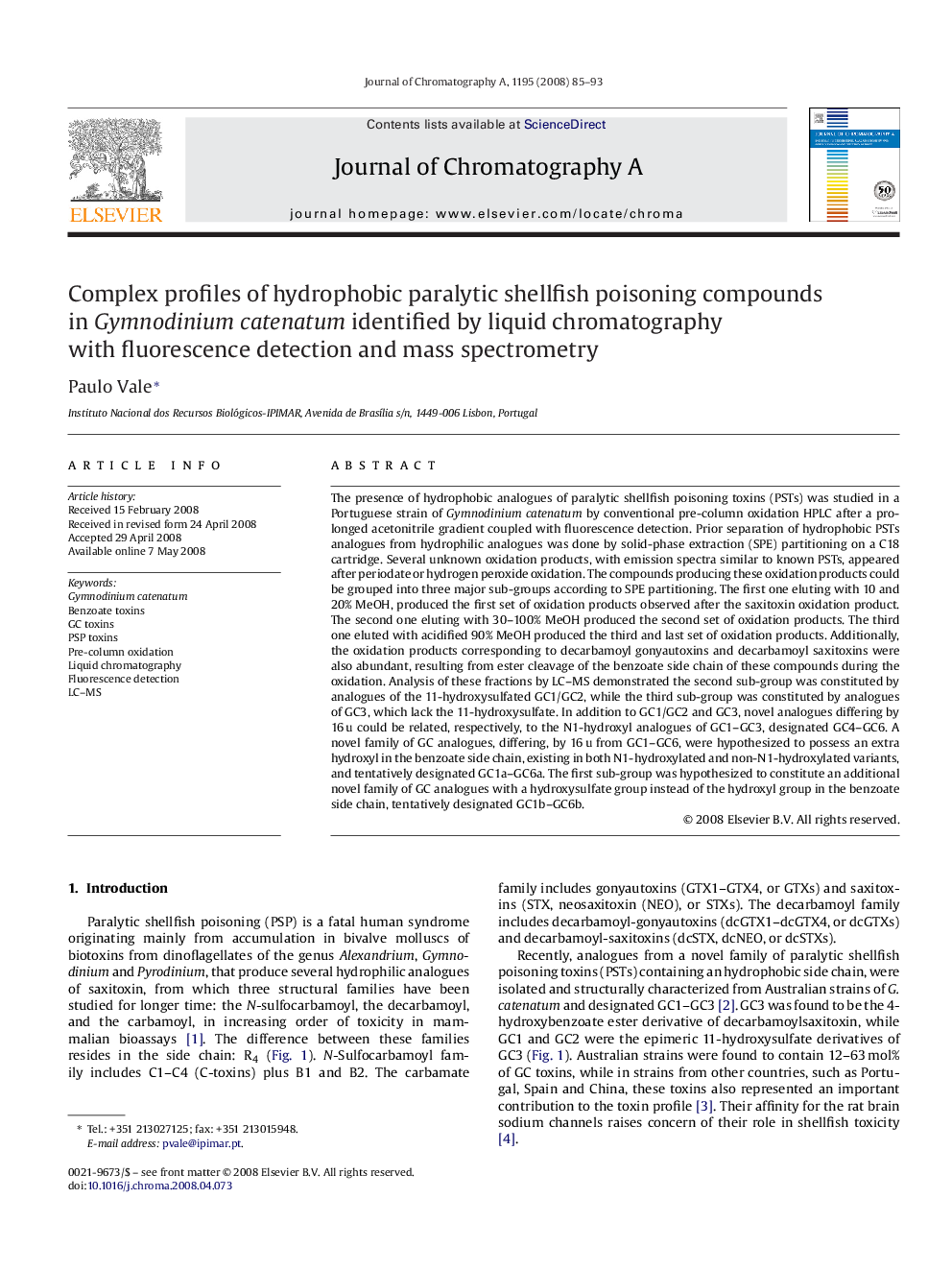| کد مقاله | کد نشریه | سال انتشار | مقاله انگلیسی | نسخه تمام متن |
|---|---|---|---|---|
| 1206834 | 1493719 | 2008 | 9 صفحه PDF | دانلود رایگان |

The presence of hydrophobic analogues of paralytic shellfish poisoning toxins (PSTs) was studied in a Portuguese strain of Gymnodinium catenatum by conventional pre-column oxidation HPLC after a prolonged acetonitrile gradient coupled with fluorescence detection. Prior separation of hydrophobic PSTs analogues from hydrophilic analogues was done by solid-phase extraction (SPE) partitioning on a C18 cartridge. Several unknown oxidation products, with emission spectra similar to known PSTs, appeared after periodate or hydrogen peroxide oxidation. The compounds producing these oxidation products could be grouped into three major sub-groups according to SPE partitioning. The first one eluting with 10 and 20% MeOH, produced the first set of oxidation products observed after the saxitoxin oxidation product. The second one eluting with 30–100% MeOH produced the second set of oxidation products. The third one eluted with acidified 90% MeOH produced the third and last set of oxidation products. Additionally, the oxidation products corresponding to decarbamoyl gonyautoxins and decarbamoyl saxitoxins were also abundant, resulting from ester cleavage of the benzoate side chain of these compounds during the oxidation. Analysis of these fractions by LC–MS demonstrated the second sub-group was constituted by analogues of the 11-hydroxysulfated GC1/GC2, while the third sub-group was constituted by analogues of GC3, which lack the 11-hydroxysulfate. In addition to GC1/GC2 and GC3, novel analogues differing by 16 u could be related, respectively, to the N1-hydroxyl analogues of GC1–GC3, designated GC4–GC6. A novel family of GC analogues, differing, by 16 u from GC1–GC6, were hypothesized to possess an extra hydroxyl in the benzoate side chain, existing in both N1-hydroxylated and non-N1-hydroxylated variants, and tentatively designated GC1a–GC6a. The first sub-group was hypothesized to constitute an additional novel family of GC analogues with a hydroxysulfate group instead of the hydroxyl group in the benzoate side chain, tentatively designated GC1b–GC6b.
Journal: Journal of Chromatography A - Volume 1195, Issues 1–2, 27 June 2008, Pages 85–93